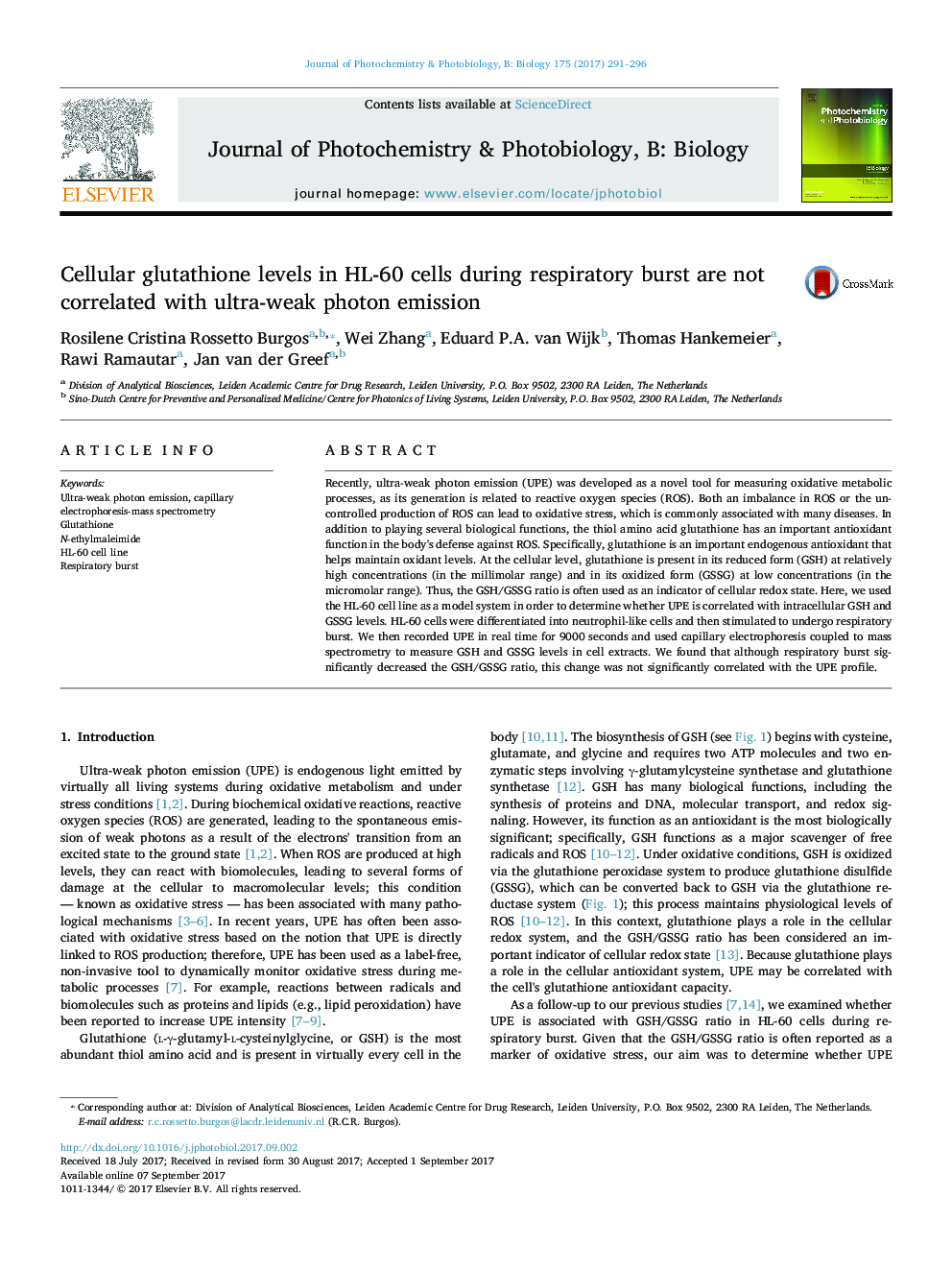| Article ID | Journal | Published Year | Pages | File Type |
|---|---|---|---|---|
| 6452567 | Journal of Photochemistry and Photobiology B: Biology | 2017 | 6 Pages |
â¢GSH/GSSG ratio is decreased during the respiratory burst in HL-60 cells.â¢UPE profile does not significantly correlate with cellular glutathione levels.â¢UPE profile may report oxidative processes involving several pathways at different organizational levels and time scales.
Recently, ultra-weak photon emission (UPE) was developed as a novel tool for measuring oxidative metabolic processes, as its generation is related to reactive oxygen species (ROS). Both an imbalance in ROS or the uncontrolled production of ROS can lead to oxidative stress, which is commonly associated with many diseases. In addition to playing several biological functions, the thiol amino acid glutathione has an important antioxidant function in the body's defense against ROS. Specifically, glutathione is an important endogenous antioxidant that helps maintain oxidant levels. At the cellular level, glutathione is present in its reduced form (GSH) at relatively high concentrations (in the millimolar range) and in its oxidized form (GSSG) at low concentrations (in the micromolar range). Thus, the GSH/GSSG ratio is often used as an indicator of cellular redox state. Here, we used the HL-60 cell line as a model system in order to determine whether UPE is correlated with intracellular GSH and GSSG levels. HL-60 cells were differentiated into neutrophil-like cells and then stimulated to undergo respiratory burst. We then recorded UPE in real time for 9000 seconds and used capillary electrophoresis coupled to mass spectrometry to measure GSH and GSSG levels in cell extracts. We found that although respiratory burst significantly decreased the GSH/GSSG ratio, this change was not significantly correlated with the UPE profile.
